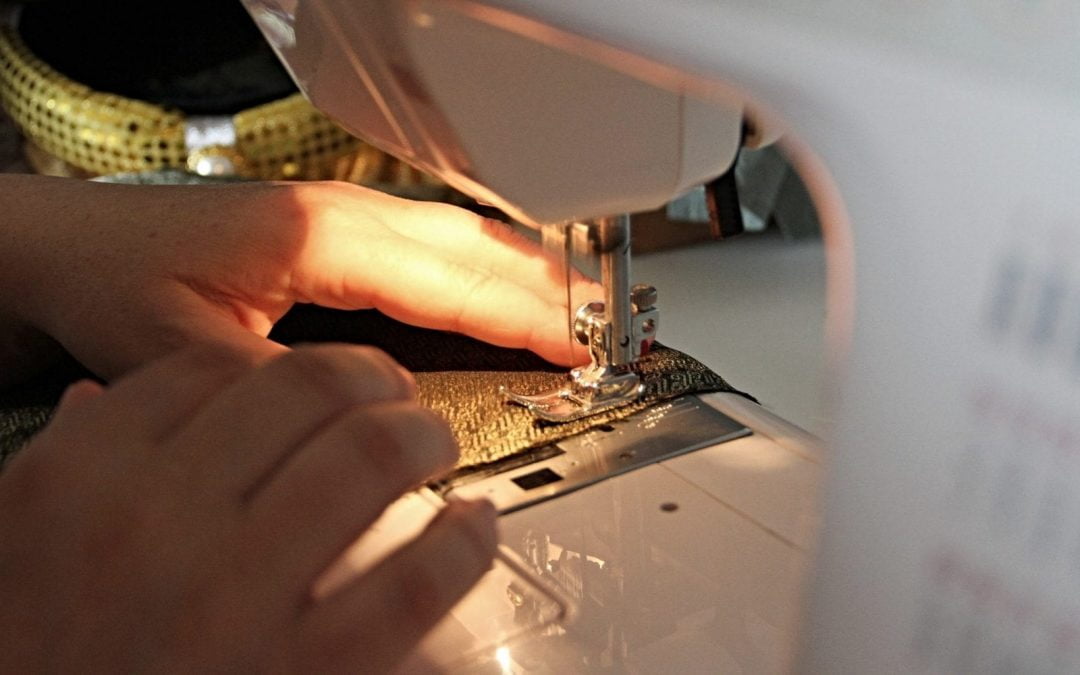As an educator, nothing compares to seeing my students’ eyes light up when I teach “My Clothes, My World,” a program about fashion, human rights and sustainability.
Produced by Fashion Takes Action, a Canadian nonprofit organization that focuses on sustainability, the program offers a series of workshops that help students think critically about their shopping choices.
I’ve often wondered why fashion and social justice resonate with boys as well as girls, from fourth grade all the way up to 12th grade.
I think it has to do with one simple fact: What we wear is fundamentally connected to how we explore and express our identity.
Youth are constantly plugged in to social media and pop culture, which influences their clothing choices.
At the same time, school teachers help youth to engage with current issues: poverty, equity, climate change and the need to live more sustainably.
These challenges are deeply important to today’s youth. And when students realize their collective consumer choices can influence the fashion industry – for the better – they are eager to get on board.
In Christian circles, fashion isn’t a popular topic. We rarely discuss our style choices, except in relation to modesty, and clothing doesn’t become top of mind unless we are organizing a donation drive in response to an emergency.
Fashion is easily swept aside as materialistic fluff. But just like my students, I think the church could get excited about fashion as a delivery method for justice work.
Our society is addicted to cheap and disposable fashion. As a result, God’s creation and people are paying a high price. Let me paint a picture of the fashion industry and our relationship to it as consumers.
Environment: Fashion is the second most polluting industry after oil. This encompasses water, air, waste and toxic chemicals.
According to data sourced from the Organization for Economic Cooperation and Development, if fashion were a country, it would be the fourth largest emitter of carbon dioxide.
About 60% of all clothing manufactured (including clothes that have not been purchased) are incinerated or sent to landfills within one year.
Labor: Fashion is one of the most labor-intensive industries, directly employing 60 million.
About 80% of these workers are women, and the majority of them do not make a living wage.
This puts pressure on them to work overtime and to put up with unsafe working conditions and harassment.
Moreover, it is estimated that more than 40 million people (including children) are living in modern slavery.
They labor for various industries, but many of them are in the supply chains of Western fashion brands.
Consumers: Globally, we bought more than 107 billion items of clothing and 14.5 billion pairs of shoes in 2016. That amounts to 13 items of clothing and two pairs of shoes per person in one year.
But, of course, most of that is consumed in wealthy countries. The average in the United States, for example, is 52 items a year.
According to a store exit survey of 1,000 people, Greenpeace found that 66% of shoppers lost the “buzz” of buying something new within a few moments to a day.
Although this picture seems bleak, there is good news. You can help fight injustice by simply paying attention to how you shop, wear, care and part with your clothes. Here’s how to get started on your very own ethical wardrobe:
Shop: Do it less, and when you need something, shop secondhand first.
If you need to buy new, try to make your purchase from a mainline retail brand that has a better rating for ethics and environment on the Good on You app, the Done Good browser extension or the “Behind the Barcode” report, produced annually by Baptist World Aid in Australia.
If you’re shopping less, you may have more money to invest in local, fair trade or sustainable brands.
To start, try one of the growing number of brands for ethical basics, such as the Canadian retailer Kotn or Everlane.
Wear: The most sustainable thing, of course, is to use what you already have.
About 80% of the clothes in our closets are unused or forgotten. Take time to rummage through your wardrobe; you’ll be surprised by the “new” discoveries you’ll find.
You can also accessorize or wear your clothes in different ways. Once you have a few winning ensembles, be a proud outfit repeater.
Care: You can extend the life of your clothing by washing in cold water and air-drying.
If there is a stain, learn how to remove it. If you get a broken zipper or rip in the wrong place, take your item to a tailor or fix it yourself.
Try to avoid dry cleaning, as the solvents are incredibly toxic to you, the workers and the planet. Instead, wash your clothes gently or take them to a professional wet cleaner.
Part: No clothes or textiles should go to landfills to rot and release carbon dioxide into our atmosphere.
As long as it is clean and dry, even holey socks and underwear can be donated. These items will not be resold at your local Value Village, but they can be repurposed in upholstery stuffing or insulation.
Even shoes that are missing a pair can be reunited with matches through the mind-boggling brokerages of the global used-clothing industry.
Fashion influence isn’t just for an elite crowd. We all wear clothes, so we can all make a difference. And you can start today.
Editor’s note: A version of this article first appeared in the Fall 2019 edition of Mosaic Magazine, a publication of Canadian Baptist Ministries. It is used with permission.
Sarah Peel is a sustainability educator, social entrepreneur and self-taught stylist located in Toronto. She is also the founder of Citizenne, a collective of women who offer ethical fashion consultancy.

